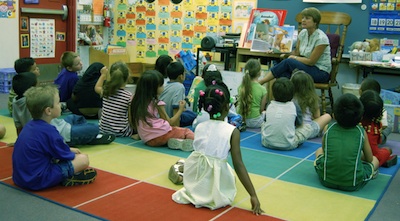
The purpose of the PROMISE Preschool Resource Guide is to provide research-based evidence and best practices for preschools enrolling three- through five-year-old dual language children.
This Resource Guide includes the PROMISE Preschool vision, which is a vision of appropriate research-based and best practices for effectively working with dual language preschool children using the research-based PROMISE Preschool Core Principles. The resources presented here include Frequently Asked Questions (FAQs) by preschool teachers and administrators, as well as parents of dual language children. We also include many links to online and print-based materials; research; instructional strategies, practices, and approaches; assessment ideas; and cultural activities and ideas in English and Spanish.
The focus is on Latino preschool children who will likely enter school as dual language children. Some may have bilingual skills, while others may be labeled as English Language Learners (ELL), but all have Spanish as their home language and are learning English. Some children may be learning Spanish and English simultaneously from birth, or at least before their first birthday. These children may be referred to as "simultaneous dual language learners" or "simultaneous bilingual" children. Other children may be developing Spanish as their home language during their first three years and learning English for the first time at preschool, so they are known as "successive" or "sequential bilingual or dual language learners.
Why the focus on dual language children? Demographic and census reports indicate that the population of dual language children represents a significant amount of the population of children entering Head Start (one in three children) and kindergarten in California and other states.
Focus on Latino children represents the fact that close to three quarters of ELL children are Spanish speakers. In addition, the PROMISE Initiative at the K-12 and preschool levels focused on Latino ELL students; thus, the preschool teachers that formed the core group of this effort worked primarily with Latino dual language learners.
While Latino and Spanish-speaking dual language children are the focal group of this resource guide, many comments and resources cited here will address other dual language groups and other ethnic/cultural backgrounds as well. Further, this Resource Guide can be used in a great variety of preschool settings that are federally-funded (e.g., Head Start), State- or locally-funded, or private.
For further research and information about DLL children, see Additional Research and Resources.
Dual language children “are less likely than other children living in poverty to attend preschool, despite the fact that preschool attendance has more of a beneficial effect for Spanish-speaking dual language learners than for any other comparable demographic group.”
(Dual language learners in the early years: Getting ready to succeed in school)